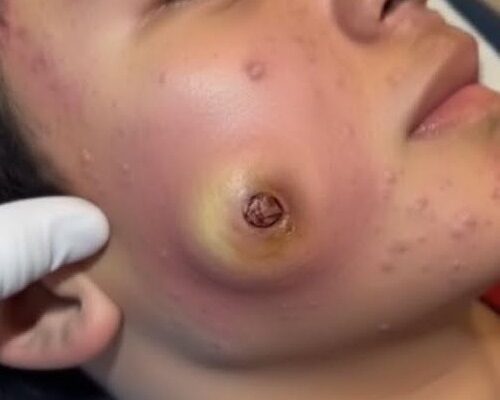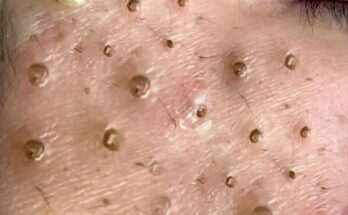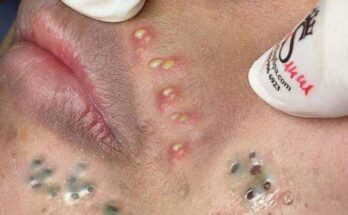What began as a local movement focused on self-care and healthy skin has now evolved into a worldwide standard for innovation, gentle formulations, and beautiful results.
One of the most exciting areas of growth in K-beauty today is its approach to managing acne-prone skin.
Unlike harsh treatments that strip the skin of moisture or rely on strong chemicals, K-beauty takes a balanced, soothing, and science-based approach to supporting clearer, healthier-looking skin.
From Harsh Treatments to Skin Barrier Care
For years, acne care products in many parts of the world focused on drying out blemishes and reducing oil production at all costs. However, this often led to irritated, flaky, or overly sensitive skin. K-beauty’s philosophy challenges this idea by treating acne not as an isolated problem but as a sign that the skin’s natural barrier might need extra support. Modern Korean skincare formulations often include mild exfoliants, calming botanicals, and hydrating ingredients that help the skin maintain its balance. This approach has helped redefine how consumers think about acne prevention and management. Instead of focusing solely on eliminating blemishes, K-beauty promotes overall skin health, which can naturally reduce the frequency of breakouts over time.

Ingredients Leading the Anti-Acne Revolution
A defining feature of K-beauty is its focus on natural ingredients combined with cutting-edge technology. When it comes to acne-prone skin, certain ingredients have become especially popular for their effectiveness and mildness. Centella Asiatica, also known as Cica, has been one of the biggest stars in Korean skincare. Known for its soothing and hydrating qualities, it helps calm redness and supports skin recovery. Tea tree extract is another favorite, often used for its purifying and refreshing properties without the intensity of more aggressive treatments. Propolis, derived from bees, is gaining attention as well for its protective and balancing effects, helping maintain a clear complexion while supporting the skin barrier. Another breakthrough trend involves fermented ingredients. Fermentation enhances the potency and absorption of natural extracts, allowing them to deliver benefits more effectively. Fermented green tea, rice, and soybean extracts are now common in many Korean products targeting acne and sensitivity. These ingredients help nourish and strengthen the skin, giving it a smoother, more radiant look.
Innovative Textures and Multi-Step Routines
K-beauty is known for its creative product formats. For acne care, innovations include lightweight gel creams, calming essences, and even mist toners designed to refresh the skin without clogging pores. The emphasis is always on hydration and balance. The traditional multi-step Korean skincare routine has also evolved to suit modern lifestyles. Many people now follow a simplified version focused on cleansing, soothing, and protecting the skin barrier. The first step often involves a gentle, low-pH cleanser that removes impurities without stripping natural oils. This is followed by a calming toner or essence, which preps the skin to absorb treatment products. Then come serums that target specific concerns such as excess oil, rough texture, or post-acne marks. Moisturizers in K-beauty acne lines tend to be light yet deeply hydrating, often featuring ingredients like hyaluronic acid or panthenol. These ensure that the skin remains comfortable and resilient. Finally, sunscreen plays a key role in every routine, helping prevent hyperpigmentation and protecting healing skin from environmental stress.
The Role of Probiotics and Skin Microbiome Balance
Another fascinating K-beauty trend in acne care revolves around maintaining a balanced skin microbiome. The skin’s surface hosts a diverse community of microorganisms that play a crucial role in keeping it healthy. Imbalances in this microbiome can contribute to irritation or breakouts. Korean brands have been pioneers in creating skincare products enriched with probiotics and prebiotics that help nourish beneficial bacteria on the skin. This gentle and holistic approach aims to support natural resilience rather than aggressively target bacteria associated with acne. The result is a calmer, more balanced complexion that feels comfortable and refreshed.
Mask Innovation: Beyond Clay and Charcoal
Face masks have always been a hallmark of K-beauty, and the anti-acne segment is no exception. While clay and charcoal masks remain popular for their ability to absorb excess oil, Korean innovations have expanded the possibilities. Sheet masks infused with green tea, heartleaf extract, or snail mucin now offer targeted hydration while helping soothe stressed or blemish-prone skin. There are also hydrogel patches designed to be placed directly on blemishes. These small, nearly invisible stickers can help protect spots from external irritants and encourage a cleaner environment for healing. They are discreet, convenient, and compatible with makeup, making them a favorite among teens and adults alike.
Eco-Friendly and Vegan Formulations
Today’s consumers are more conscious than ever about what goes into their skincare. Korean brands are responding by creating vegan, cruelty-free, and eco-friendly acne solutions. These formulations avoid harsh chemicals like sulfates and parabens, focusing instead on plant-based alternatives that are effective yet gentle. Packaging innovations, such as recyclable containers and minimal-waste refill systems, are also becoming standard. This sustainability focus aligns perfectly with K-beauty’s core values: respect for nature, balance, and mindful self-care. It reflects a broader cultural shift toward products that are kind to both the skin and the planet.
The Influence of Social Media and Dermatology Collaboration
Social media has played a major role in spreading K-beauty’s influence, with dermatologists, influencers, and skincare enthusiasts sharing honest reviews and educational content. The collaboration between beauty brands and dermatology experts has led to more research-backed formulations. These products are carefully tested to ensure they support skin health without making exaggerated or unrealistic claims. This transparency and science-based approach have helped K-beauty brands build strong trust among consumers worldwide. Instead of promising overnight transformations, the focus is on consistency and gradual improvement, which aligns with responsible advertising standards and promotes realistic expectations.
A Global Community of Skincare Enthusiasts
Perhaps one of the most inspiring aspects of K-beauty’s anti-acne trends is how they have created a sense of community. Skincare is no longer seen as just a beauty ritual but as a form of self-care and confidence building. People share routines, results, and experiences, fostering a positive dialogue around skin health rather than perfection. K-beauty encourages a mindset shift: acne-prone skin deserves care, patience, and nourishment, not punishment. This empathetic approach resonates with people from all walks of life who are looking for gentle yet effective ways to care for their skin.
Looking Ahead
As innovation continues, we can expect K-beauty brands to explore even more advanced formulas, combining biotechnology with natural extracts to refine their anti-acne solutions further. The future of acne care looks bright, with more inclusive, sustainable, and evidence-based products on the horizon. The evolution of K-beauty anti-acne trends is not just about new products—it represents a broader movement toward skin positivity, gentle care, and long-term wellness. By focusing on hydration, balance, and the nurturing of the skin barrier, K-beauty has set a new global standard for how acne care can be both effective and kind.



